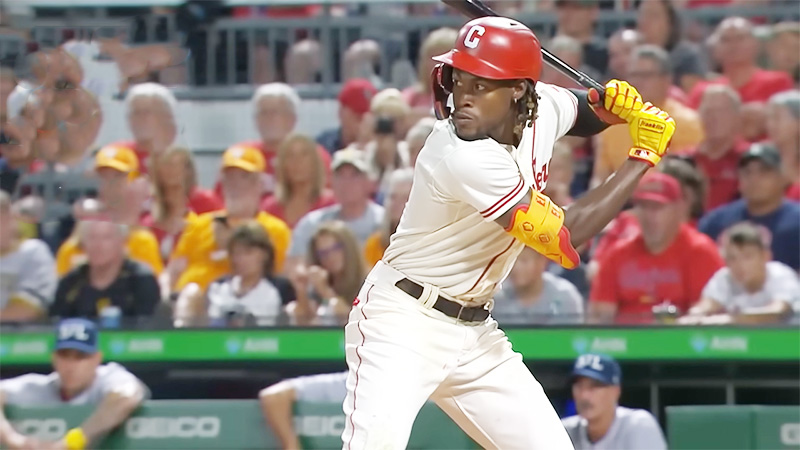In the game of baseball, extra-base hits are a crucial component in evaluating a player’s offensive capabilities. Beyond the standard single, extra-base hits encompass doubles, triples, and home runs.
These hits not only showcase a player’s power but also their ability to drive in runs and contribute significantly to their team’s offensive production.
Extra-base hits can also highlight a player’s speed and baserunning skills, adding an additional dimension to their offensive profile.
In this article, we will delve into the definition of extra-base hits, explore their significance in evaluating offensive players, and examine the relationship between extra-base hits and both power and speed.
What is Extra-base Hit?
An extra-base hit in baseball refers to a hit where the batter is able to advance past first base and reach second, third, or even home plate without the assistance of a fielding error or a throw to retire another baserunner.
It is called an extra-base hit because the batter gains more than the typical single base associated with a regular hit. Extra-base hits include doubles, triples, and home runs.
A double occurs when the batter safely reaches second base, a triple when the batter reaches third base, and a home run when the batter crosses home plate.
These hits are considered more valuable than singles because they provide an opportunity for the batter to drive in more runs and increase the likelihood of scoring themselves. Extra-base hits are often an indication of a batter’s power and ability to hit the ball with strength and distance.
They contribute significantly to a team’s offense by advancing baserunners and driving in runs, which can be crucial in determining the outcome of a game.
Types of Extra-base Hit

There are three primary types of extra-base hits: doubles, triples, and home runs.
1. Doubles: the Common Extra-base Hit
Doubles are the most common form of extra-base hits in baseball. They occur when a batter hits the ball and safely reaches second base without any errors or subsequent plays.
Doubles are achieved by hitting the ball into the gaps between outfielders or driving it down the lines.
Hitting doubles requires skill and precision. Batters aim to place the ball in areas where the outfielders are not positioned, increasing the chances of the ball rolling to the wall or into open spaces.
Line drives, which have a low, powerful trajectory, also contribute to hitting doubles by evading defenders and landing in the outfield. Doubles hold statistical significance in evaluating a player’s offensive performance.
They contribute to a player’s total bases and slugging percentage, showcasing their ability to hit with power and consistently produce extra-base hits.
Additionally, players with a high number of doubles often rank among the league leaders in run production, as they create scoring opportunities and drive in teammates with their extra-base hits.
2. Triples: the Exciting Extra-base Hit
Triples bring excitement to baseball as extra-base hits. They occur when a batter hits the ball deep into the outfield and successfully reaches third base without errors or subsequent plays.
Factors contributing to hitting triples include deep outfield hits, speed, and baserunning skills. Hitting the ball far enough from outfielders allows the batter to round the bases swiftly, using their speed to turn a hit into a thrilling triple.
Memorable triples from baseball history, such as Bobby Thomson’s “Shot Heard ‘Round the World” and Willie Mays’ “The Catch,” have left lasting impressions on fans.
Triples contribute to a player’s offensive profile by showcasing power, generating extra bases, and demonstrating speed and baserunning abilities. They often result in runs scored and drive teammates from scoring positions, adding excitement to the game.
3. Home Runs: the Majestic Extra-base Hit
Home runs are the epitome of power hitting in baseball, representing the most celebrated form of an extra-base hit. When a batter hits the ball out of the playing field, it instantly scores a run for their team.
Power, technique, and bat speed are essential factors contributing to hitting home runs. Players with exceptional upper body strength and bat speed can generate the power needed to clear the outfield fences.
Employing proper technique, including a solid swing and precise contact with the sweet spot of the bat, maximizes the chances of hitting a home run.
Baseball history is filled with iconic home runs, such as Bobby Thomson’s “Shot Heard ‘Round the World” and Kirk Gibson’s dramatic walk-off home run.
Home runs have a significant impact on a player’s offensive production, boosting their slugging percentage and contributing to run production.
They symbolize the majestic and powerful side of the game, capable of shifting the momentum and thrilling fans with their instant scoring impact.
Evaluating Players Through Extra-base Hits

When evaluating the offensive prowess of baseball players, extra-base hits play a vital role.
Significance of Extra-base Hits as a Statistic in Player Evaluation
Extra-base hits are a key statistic in player evaluation as they provide insights into a player’s power and ability to produce offense.
While singles contribute to a player’s batting average, extra-base hits showcase their ability to hit the ball with greater force and generate extra bases. They indicate a player’s capacity to drive in runs, create scoring opportunities, and contribute significantly to their team’s offensive output.
Link Between Extra-base Hits and Slugging Percentage
There is a strong correlation between extra-base hits and slugging percentage. Slugging percentage measures the average number of total bases achieved per at-bat, making it a valuable metric for assessing a player’s power and extra-base hit production.
Players who consistently hit doubles, triples, and home runs tend to have higher slugging percentages, indicating their ability to generate extra bases and impact the game offensively.
How High Extra-base Hit Rates Correlate With Offensive Success
High rates of extra-base hits often correlate with offensive success. Players with a greater number of extra-base hits are more likely to drive in runs, score runs themselves, and contribute significantly to their team’s offensive production.
Their ability to consistently hit for extra bases puts pressure on opposing pitchers and defenses, creating scoring opportunities and enhancing their overall offensive impact.
Moreover, high extra-base hit rates demonstrate a player’s consistency and ability to make solid contact with the ball. Players who frequently hit doubles, triples, and home runs exhibit a level of power and offensive prowess that can make them formidable threats in the lineup.
Role of Extra-base Hits in Driving in Runs and Scoring
Extra-base hits play a crucial role in driving in runs and scoring. When a player hits an extra-base hit, they advance themselves or their teammates into scoring positions.
Doubles and triples put runners in scoring position, increasing the likelihood of crossing home plate and adding to the team’s run total. Home runs, on the other hand, result in an immediate run scored.
Players with a high number of extra-base hits often rank among the league leaders in runs batted in (RBIs), indicating their ability to drive in teammates.
Extra-base hits provide the opportunity to capitalize on scoring opportunities and significantly contribute to a team’s offensive success.
Additionally, extra-base hits contribute to a player’s own run-scoring ability. When a player hits a double, triple, or home run, they have the potential to score themselves, adding to their personal run total.
High rates of extra-base hits often indicate a player’s ability to be a catalyst for scoring and contribute to their individual offensive production.
Evaluating players through extra-base hits is crucial in assessing their offensive capabilities. Extra-base hits provide insights into a player’s power, ability to drive in runs, and propensity to score.
The correlation between extra-base hits and slugging percentage highlights their impact on a player’s overall offensive profile. Players with high extra-base hit rates often excel in offensive success and contribute significantly to their team’s scoring output.
Extra-base Hits and Speed
Speed is an essential attribute in baseball, impacting various aspects of the game.
Relationship Between Extra-base Hits and a Player’s Speed
There is a notable relationship between a player’s speed and their ability to achieve extra-base hits. Speedy players have a greater likelihood of stretching potential singles into doubles or triples due to their ability to accelerate quickly and cover more ground on the basepaths.
Their speed allows them to take advantage of defensive gaps, outfield misplays, and favorable bounce angles, resulting in additional bases.
How Speed Impacts the Ability to Convert Potential Singles Into Doubles or Triples
Speed plays a significant role in converting potential singles into doubles or triples. When a player possesses above-average speed, they can take aggressive turns around first base and quickly reach second base, potentially turning a single into a double.
Likewise, their speed allows them to round second base and advance to third base before the defense can make accurate throws or apply tags, transforming a double into a triple.
Speed also enables players to take extra bases on hits to the outfield. Their quickness allows them to cover the distance between bases faster, making them less vulnerable to being thrown out by the defense.
This ability to advance bases with speed contributes to a higher rate of extra-base hits.
Examples of Players Who Excel in Both Power and Speed Categories
Several players have demonstrated an exceptional combination of power and speed, excelling in both categories. One such example is Mike Trout, a highly regarded outfielder known for his power-hitting and elite speed.
Trout consistently hits for both extra bases and stolen bases, showcasing his ability to generate extra-base hits while being a threat on the basepaths.
Another example is Mookie Betts, a dynamic player known for his power, speed, and baserunning skills. Betts has a knack for hitting doubles and triples, and his speed allows him to steal bases and be a disruptive force on the basepaths.
The Role of Extra-base Hits in Showcasing a Player’s Baserunning Skills
Extra-base hits play a crucial role in showcasing a player’s baserunning skills. When a player hits an extra-base hit, their ability to take advantage of defensive positioning and execute efficient baserunning becomes evident.
Speedy players can round the bases aggressively, making smart decisions on when to advance or hold up, and slide into bases with precision.
The ability to score from second base on a single, take an extra base on a hit to the outfield, or read the ball off the bat and anticipate extra-base opportunities are all indications of a player’s baserunning skills.
Extra-base hits provide a platform for players to showcase their speed, agility, instincts, and overall baserunning capabilities, adding an additional dimension to their offensive profile.
The relationship between extra-base hits and speed in baseball is significant. Speedy players have a greater capacity to convert potential singles into doubles or triples, showcasing their ability to generate extra bases through their quickness.
Players who excel in both power and speed categories, such as Mike Trout and Mookie Betts, demonstrate the impact of speed on extra-base hit production.
Players With the Most Extra-base Hits in Baseball History
| Rank | Player | Extra-Base Hits |
| 1 | Hank Aaron | 1,477 |
| 2 | Barry Bonds | 1,440 |
| 3 | Babe Ruth | 1,356 |
| 4 | Stan Musial | 1,377 |
| 5 | Willie Mays | 1,323 |
| 6 | Albert Pujols | 1,300 |
| 7 | Alex Rodriguez | 1,295 |
| 8 | Lou Gehrig | 1,190 |
| 9 | Carl Yastrzemski | 1,157 |
| 10 | Jimmie Foxx | 1,146 |
FAQs
What is the all-time record for the most extra-base hits in a single season?
The record for the most extra-base hits in a single season is held by Babe Ruth, who achieved 119 extra-base hits in the 1921 season. Ruth’s record-breaking season included 44 doubles, 16 triples, and 59 home runs.
Which player has the highest career slugging percentage based on their extra-base hits?
Babe Ruth holds the highest career slugging percentage based on extra-base hits. Ruth’s career slugging percentage stands at an impressive .690. His ability to hit for power and accumulate a significant number of extra-base hits contributed to his remarkable slugging percentage.
Are there any active players who rank high in career extra-base hits?
Yes, there are several active players who have accumulated a substantial number of extra-base hits in their careers. As of the knowledge cutoff in 2021, players like Albert Pujols, Miguel Cabrera, and Robinson Cano have amassed a considerable number of extra-base hits and continue to add to their totals.
Has there been a player who hit for the cycle solely with extra-base hits?
No, hitting for the cycle, which involves hitting a single, double, triple, and home run in a single game, requires a combination of different types of hits. It is not possible to hit for the cycle solely with extra-base hits. Hitting for the cycle typically involves a combination of power and speed.
Conclusion
Extra-base hits hold significant importance in baseball and serve as a valuable metric for evaluating a player’s offensive capabilities. Doubles, triples, and home runs provide insights into a player’s power, ability to drive in runs, and capacity to score.
They are indicative of a player’s ability to hit the ball with force, generate extra bases, and contribute significantly to their team’s offensive production.
The link between extra-base hits and statistics such as slugging percentage highlights their impact on a player’s overall offensive profile. Hopefully, you’ve understood the factors very well. Thanks for your time.







